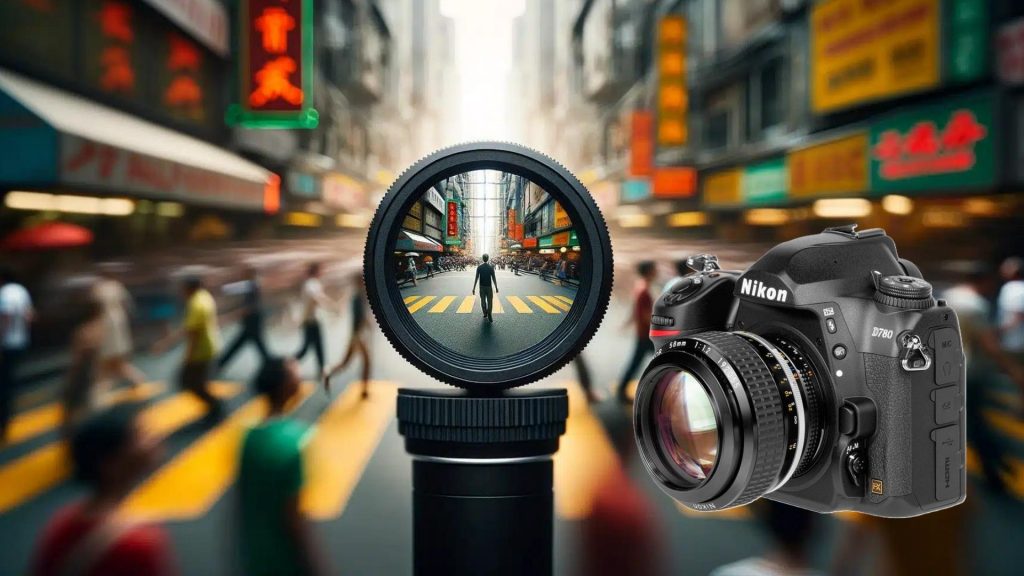Whether you’re an amateur photographer or a seasoned professional, there’s nothing more frustrating than having your Nikon camera not focusing. You’re all set for the perfect shot, the lighting is great, the composition is flawless but then, your camera decides to be stubborn. The image on your screen looks blurry, and the autofocus simply won’t cooperate.

Click Here to Buy Nikon Camera and Lens Now on Amazon
If this sounds familiar, you’re not alone. A camera not focusing properly is a common issue, but fortunately, it can often be fixed with some troubleshooting and understanding of the underlying causes. In this article, we’ll explore the most common reasons your Nikon camera may be struggling to focus and provide easy solutions for each problem.
The Real Reason Behind Your Nikon Camera Not Focusing
Incorrect Focus Mode Settings
One of the most frequent reasons for focusing issues on a Nikon camera is simply that it’s set to the wrong focus mode. Nikon cameras typically offer multiple autofocus modes, and using the incorrect one for your scene can result in focus problems.
Types of Autofocus Modes:
- Single-Point AF (AF-S): This mode locks focus when you half-press the shutter button. It’s ideal for stationary subjects like landscapes or portraits. If you’re trying to shoot a moving subject, this mode might result in out-of-focus images because the focus remains locked even if the subject moves.
- Continuous AF (AF-C): This mode continuously tracks focus while you hold the shutter button halfway down. It’s perfect for moving subjects, such as sports or wildlife. However, if your subject is stationary, this mode can cause unnecessary focus adjustments, leading to a blurry image.
- Auto-Area AF: In this mode, the camera automatically selects the focus point, which can be unreliable if the camera locks focus on the wrong subject.
Solution:
Check your focus mode. If your subject is stationary, set your camera to Single-Point AF (AF-S). If it’s a moving subject, switch to Continuous AF (AF-C) for better results.
Dirty Lens or Sensor
A dirty lens or sensor can be one of the sneakiest causes of focus issues. Even a small smudge, dust, or fingerprint can throw off the camera’s autofocus system. Sometimes, dirt on the lens may affect contrast, which in turn affects the camera’s ability to focus accurately.
Solution:
Before you go into panic mode, check the front of your lens for any dirt or smudges. Gently clean it using a microfiber cloth. If the issue persists, consider cleaning the camera’s sensor, or take it to a professional for cleaning.
Poor Lighting Conditions
Cameras rely heavily on contrast to lock focus. If you’re shooting in low light or a scene with very little contrast (for example, a white wall), your Nikon camera might struggle to find a clear focal point. This is because the camera’s autofocus system has a harder time locking onto areas that don’t have much difference in light or color.
Solution:
In low-light conditions, you can either switch to manual focus or use a lens with a wider aperture (like f/1.8 or f/2.8) to allow more light into the camera. Additionally, activating the camera’s built-in focus assist light can help the autofocus system in dark environments.
Low-Contrast Subjects
Even in well-lit environments, a low-contrast subject can make it difficult for your Nikon camera to focus properly. If you’re trying to focus on something like a plain sky, a wall with little texture, or a surface with uniform color, the camera may struggle to lock onto a clear focal point.
Solution:
If you’re dealing with a low-contrast subject, try focusing on an area of the frame with more contrast. For example, if you’re shooting a person in front of a blank wall, focus on their eyes or clothing, which likely has more contrast than the background. Another trick is to slightly adjust your composition to introduce more contrast into the focus area.
Using the Wrong Autofocus Point
Most Nikon cameras allow you to manually select your autofocus points. If you accidentally select the wrong focus point or leave the camera in automatic selection mode, it may choose a point that’s far from your intended subject, resulting in blurry images.
Solution:
Switch to single-point autofocus mode and manually select the focus point that matches the subject you want to capture. This way, you’ll have more control over where the camera focuses.
Camera Shake
Sometimes, focus issues aren’t due to the camera’s autofocus system at all but are instead caused by a camera shake. If your hands aren’t steady when taking a photo, especially in low-light conditions, the slight movement can result in a blurry image that might seem like a focus issue.
Solution:
To minimize camera shake, try using a tripod or stabilize the camera by leaning against a solid surface. You can also enable your camera’s image stabilization (if available) or increase the shutter speed to prevent blurriness caused by movement.
Using a Lens That’s Not Compatible With Your Camera’s Autofocus
Not all lenses are created equal, and some older or third-party lenses may not work perfectly with your Nikon camera’s autofocus system. This could be due to outdated technology or a lack of autofocus motors in the lens itself.
Solution:
Make sure the lens you’re using is fully compatible with your Nikon camera body. If it’s an older or third-party lens, try using manual focus instead of relying on the camera’s autofocus system.
Subject Too Close to the Camera
Every lens has a minimum focusing distance, which is the closest distance it can focus on an object. If your subject is too close to the camera, the autofocus may struggle to lock onto it.
Solution:
Check the minimum focusing distance for your lens, and make sure your subject is farther than that distance. If you need to get closer, consider using a macro lens designed for close-up photography.
Autofocus System Malfunction
While rare, it’s possible that your Nikon camera’s autofocus system could malfunction due to software bugs or hardware issues. If none of the above solutions work, your camera might be suffering from an internal problem.
Solution:
First, try resetting the camera’s settings to factory defaults. If the autofocus issue persists, the camera might need professional repair. Take it to an authorized Nikon service center for a thorough check-up.
Lens Calibration Issues
Some lenses may require fine-tuning to work perfectly with your specific camera body. Over time, lenses can become slightly misaligned, which can cause focusing issues.
Solution:
Many Nikon cameras have an autofocus fine-tuning feature that allows you to calibrate the lens for better focus accuracy. Consult your camera’s manual for instructions on how to perform autofocus fine-tuning.
Manual Focus Override
If you’ve accidentally switched to manual focus mode or if the camera’s focus ring has been nudged, the camera may not autofocus properly. Some Nikon lenses also have an autofocus/manual focus switch that might get bumped without you realizing it.
Solution:
Double-check that the camera is set to autofocus mode. Look for a switch on the lens that says “AF” and ensure it’s not set to “M” (manual focus).
Conclusion
While there’s nothing more frustrating than a camera that won’t focus, the good news is that most issues can be easily solved with a bit of troubleshooting. Whether it’s selecting the right focus mode, cleaning your lens, or adjusting your shooting conditions, there are plenty of ways to get your Nikon camera back to producing sharp, in-focus shots.
To prevent focus issues in the future:
- Always double-check your autofocus settings.
- Keep your lenses and sensors clean.
- Be mindful of your subject’s distance and lighting conditions.
With these tips, you’ll be well on your way to mastering focus with your Nikon camera, ensuring that your photos are sharp, stunning, and professional every time you press the shutter.
CHECK THESE OUT:
